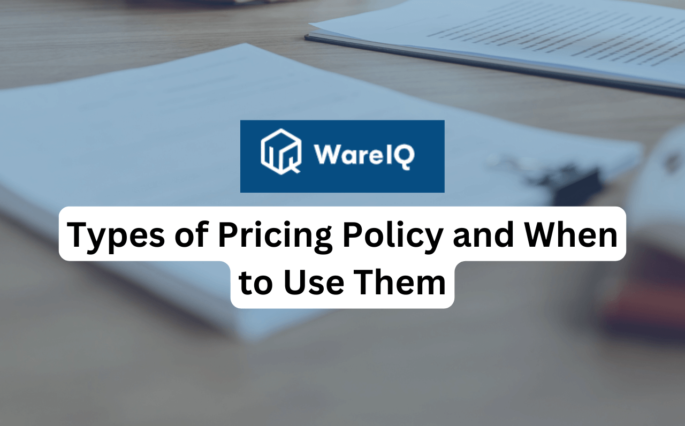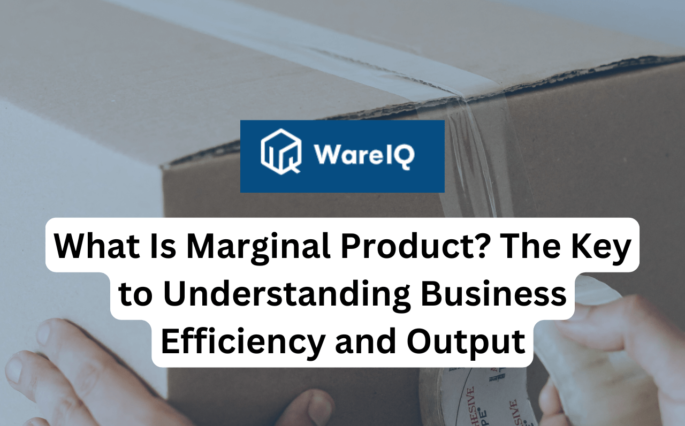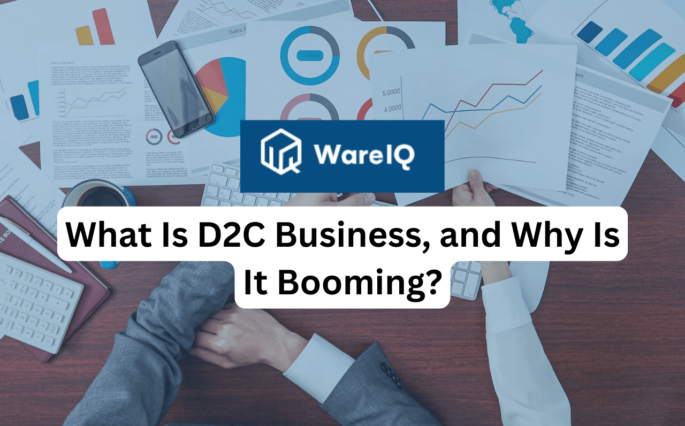15 Best Global B2B eCommerce Marketplace Strategies to Help eCommerce Players Succeed in 2025

With the ever-evolving digital era, the eCommerce sector is constantly changing. Now that 2025 is about to arrive, it’s time to examine the B2B eCommerce marketplace strategy your business needs to be aware of to remain competitive and boost online sales in the coming year.
It is anticipated that B2B eCommerce will continue to push the boundaries in the upcoming year. As a result, you would have another opportunity to enhance your marketing and sales operations if you did not take advantage of the B2B eCommerce strategies in 2025.
Although the B2B eCommerce market has long been a thriving area of commerce, the global pandemic gave it an even more significant boost. With the post-COVID world’s heavy reliance on online platforms in various domains. As a result, B2B eCommerce enterprises are anticipated to manifest a remarkable CAGR of 17.5% throughout the next five years, propelling the industry to a breathtaking $20.9 trillion market size by 2027. These enticing figures encourage small and medium-sized business (SMEs) owners to join the bonanza hunt to take home a decent share of this large revenue cake.
Here in this article, we’ve simplified and gathered the most effective B2B eCommerce marketplace strategies that we anticipate will have the most decisive influence on your business so that you can stay ahead of the curve.
- Top 15 Global B2B eCommerce Marketplace Strategies to Win the Market in 2025
- Acknowledge That B2B Online Marketplace Strategy is Similar to B2C
- Analyze The Psychology of B2B Buyers
- Determine Your Top Personas' Buying Patterns
- Invest Heavily in Search Engine Optimization (SEO)
- Enable Self-Service For Customers
- Emphasizing Product Details and Features
- Make Social Interactions a Priority
- Make Contacting You Simple for Customers
- Provide Autonomy To Loyal Customers
- Make Your Pricing Transparent
- Provide Starter Packs and Free Trials
- Post Customer Testimonials
- Utilize Product Suggestions
- Enhance Product Filtering Possibilities
- No Room For Fulfilment and Shipment Failures
- Conclusion
- Utilizing a Reputable B2B eCommerce Fulfillment Partner Like WareIQ
- B2B eCommerce Marketplace Strategies FAQs (Frequently Asked Questions)
Top 15 Global B2B eCommerce Marketplace Strategies to Win the Market in 2025
Due to the unmatched convenience of online buying, a good online store can assist you in attracting new consumers and providing superior customer service to your current ones.
The B2B eCommerce sector is expanding quickly. As a result, vendors must adopt new global B2B eCommerce marketplace-winning tactics to remain relevant and grow.
You must prepare for long-term growth, comprehend the B2B buyer mindset, and create novel relationship-building strategies if you want to surpass other vendors.
Let’s examine the top B2B eCommerce marketplace strategies for expanding your enterprise.
Acknowledge That B2B Online Marketplace Strategy is Similar to B2C
The first step in the B2B online marketplace strategies is to stop considering B2B clients as being radically distinct from B2C clients. For example, the same client who wants to buy safety equipment for their warehouse also buys things from Target or shops on Amazon for their usage.
It’s time to eliminate the notion that suggests your clients are not concerned with your website’s aesthetics or uninterested in a sophisticated eCommerce online experience. On the contrary, B2B customers have many of the same interests and preferences as B2C customers when making purchases.
Analyze The Psychology of B2B Buyers
Amongst various B2B eCommerce marketplace strategies, consider buyers are focused on margins. That is the core of their business. Additionally, they are aware that your pricing might lower their profit margins.
B2B buyers are concerned with the item’s quality, certainty, and the possibility that it will provide them with a competitive edge both now and in the future. A B2B buyer carries a logical, multi-level consideration set when trading on your marketplace.
As previously discussed, businesses that buy from you can depend on you for their profit margins and, thus, for their survival. They are at significant risk because you have the power to make or break them. So it’s clear why so many well-established companies are hesitant to use B2B markets.
In contrast, customers in B2C marketplaces often use a marketplace for accessibility, speed, and convenience. They are much less sensitive to your presence and are more concerned with rapidly and successfully locating what they seek. They don’t care if they buy it from your B2C marketplace or elsewhere because a B2C market only has a minor influence over their lives.
Determine Your Top Personas’ Buying Patterns
The most successful companies anticipate when their consumers will run out of their goods and when it is appropriate to remarket them. Your B2B online marketplace strategies should be aligned with it to understand how customers are likely to use your products or services and map out the customer journey for your buyer personas.
A few questions to ask yourself as a business owner are:
- How long is the typical purchase cycle?
- When does my clients’ fiscal year start, and when do they start creating their budgets?
- How long does it take customers to choose our items over competing brands?
- How long does it take for our products to be shipped and received?
- When will our clients decide if they are satisfied with our offerings?
The answers to these questions may change depending on the industries you market to and the items you sell. If this is the case, various persona profiles will be created so that your B2B eCommerce communications align with the purchasing preferences of your B2B customers.
Create unique sequences using these personalities and paths laid out within a marketing automation footprint. To better understand how to construct a roadmap associated with your business operations, start by reading our guide to eCommerce automation.
Invest Heavily in Search Engine Optimization (SEO)
When clients aren’t actively searching for your brand, a solid eCommerce SEO plan helps your brand stand out. With this B2B eCommerce marketplace strategy, your eCommerce website may rank highly for the goods and services you provide,
According to studies, most B2B consumers don’t actively seek out brands when they require things. Instead, 71% of B2B researchers, according to Google, begin their searches with general phrases. Decision-makers are more likely to look for the products they require at the beginning of the customer journey than to hunt for specific brands that sell them.
This means that you must have a solid SEO strategy. You’re not just looking to improve your brand’s reputation (which you likely already dominate in the SERPs). For exposure, you must also compete with other companies in your sector.
Start by optimizing your product pages to address queries arising during the purchasing process’s first stage. These consist of numerous features and product comparisons. Then broaden your content plan to address these issues. Finally, look at the lengthy queries decision-makers have and the typical problems your products can resolve.
More people can see your brand when they search for general terms because of your SEO efforts, which increases the likelihood that they will remember it when making a purchase.
Enable Self-Service For Customers
The earlier Episerver survey showed how vital self-service is to B2B customers. They want to examine available products on your eCommerce pages and buy things for themselves.
Self-service functionality was cited by 41% of respondents as one of the top ways B2B organisations can make doing business with them online simpler.
Customers are eager to speak with you but want to do their homework first. Consider making it possible for your website to directly connect with your salespeople’s calendars from within the site, as many high-ticket B2B orders require human interaction to support the transaction through to completion.
Customers’ insights are crucial for creating B2B eCommerce marketplace strategies. Make friends with the clients you serve. Do more than only observe the data that your system produces. Contact them directly, employing video chats, phone calls, emails, and messages, and arrange to meet up with them.
Emphasizing Product Details and Features
While customer research begins with the sales funnel, it extends through the purchasing process. Customers should be able to find answers on your eCommerce pages readily. Customers are more likely to bounce if they have to go on an informational hunt to see what they need.
Think about adding a “question and answer” feature to your website so that users can immediately ask questions and engage with your product mix on the page. This incremental material will also support SEO initiatives because it will be updated with relevant, new information.
List the features of particular products in bulleted product descriptions. Highlight the most crucial information as you create your eCommerce content and ensure your clients see it first.
Make Social Interactions a Priority
Engagement and learning are two key advantages social media offers to B2B eCommerce businesses. As a result, brands may expand their presence and connect with consumers more casually by communicating more on social media platforms. Social networking opens the door to social commerce.
Digital webinars and online meet-ups dominated in a year when conferences in all locations and sectors were postponed. The pandemic ended any disagreement about the benefits of online networking.
Social media can be used as a listening device as well. As a result, through B2B eCommerce marketplace strategies, sales teams can better comprehend their clients’ needs and modify their business models accordingly.
Executives are under pressure to demonstrate that social media and other communication channels positively impact business results when marketing resources are slashed. In a survey conducted by LinkedIn and Edelman, 46% of business owners said they felt the impact of their marketing efforts on direct sales is being scrutinised more carefully than in the past.
A third of executives state that “sales teams are increasingly requesting marketing to help them cope with customer engagement barriers” and “marketing is being asked to play a greater role in sales enablement efforts.”
For a seamless experience, tie together social media and eCommerce promotions. For example, it would be best if you also thought about running prospecting advertisements on Facebook and LinkedIn to draw potential customers into marketing funnels that can be designed to highlight particular product categories that are valuable to them.
Make Contacting You Simple for Customers
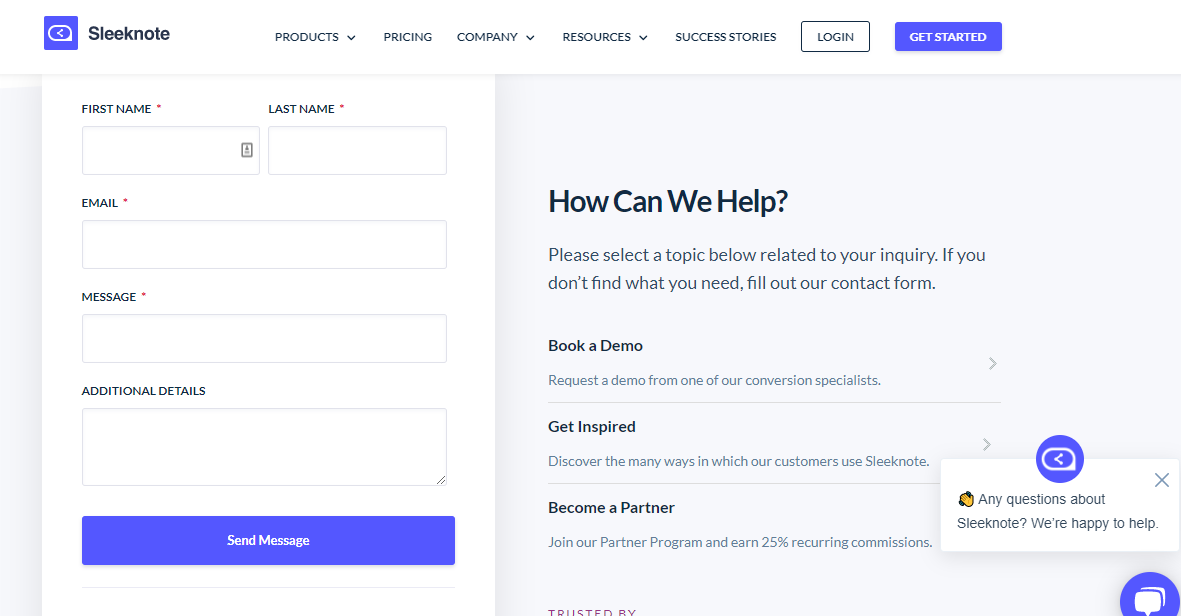
It’s not always necessary to make significant organisational or marketing changes to build your eCommerce business. However, with a few tweaks to your web design and the incorporation of new service modules, you may be able to increase your lead generation and promote interest in your business.
Reviewing your current landing pages ensure your customers can reach your sales team or product personnel. Possible improvements include:
- Along with the “add to bag” button, provide a “contact us” button.
- In the page headers and footers, provide your phone number.
- To initiate interactions, use pop-up chat boxes.
- Clarify your hours so that clients are aware that you are accessible.
People can interact with your sales team and get any questions answered with the help of all of these processes.
Provide Autonomy To Loyal Customers
Prospecting new clients and onboarding them into your eCommerce system should be your main priorities if you want to enhance your B2B eCommerce marketplace strategies. Your sales team can benefit from nurturing leads, but they don’t have to be as involved with current clients.
According to the McKinsey and Co. poll, only 15% of customers sought sales support while making a repeat purchase, compared to 76% of customers who wanted help when purchasing a brand-new good or service.
This does not imply that your sales team should ignore any interactions with current clients. On the contrary, upselling and cross-selling chances to expand your brand are constantly available. To save your customers’ time and provide your sales personnel more flexibility with their call schedules, a complete eCommerce website could be able to handle this for you.
Consider scheduling yearly check-ins with current clients to ensure their satisfaction with the products, avoid problems with satisfaction, and increase their lifetime value.
Make Your Pricing Transparent
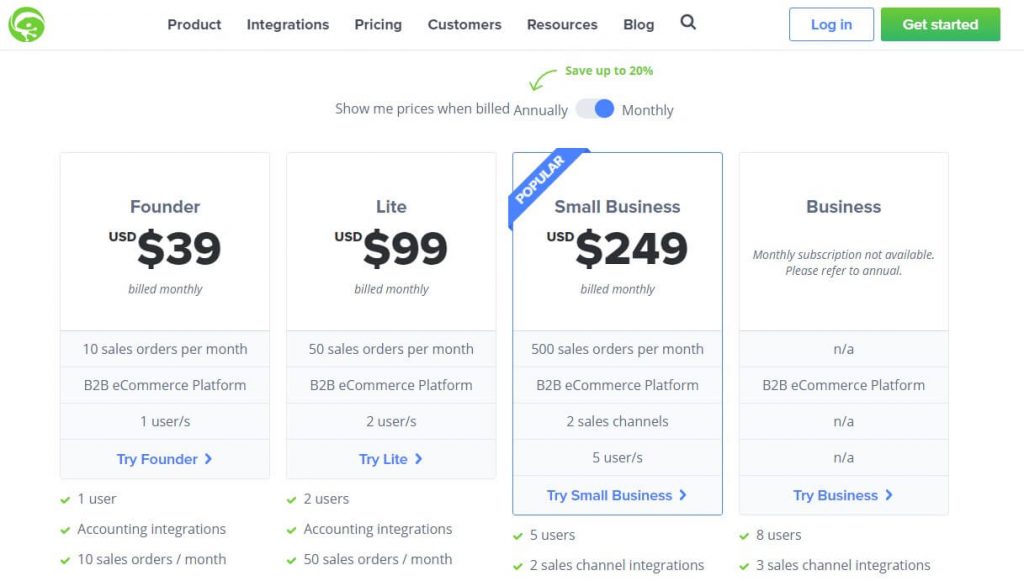
Pricing transparency is still a significant barrier for B2B customers that use internet services. Repeat consumers want to reorder products online swiftly, and potential customers want to know more about how your pricing is stacked against your rivals.
To assess the effectiveness of your price transparency pages, think about A/B testing them. Does the conversion rate increase? How does price transparency impact your sales staff and lead-generation efforts?
Build your pricing instead of using volume-based tiers and criteria.
Provide Starter Packs and Free Trials
Some of the oldest promotional tactics are still effective today, despite how marketing and eCommerce have evolved. For example, customers desire starter kits, free trials, and product samples so they may try something out before making a purchase.
These marketing techniques reduce the perceived danger of clients purchasing from you while simultaneously giving them the impression that they are getting a good deal.
PYMNTS’s Subscription Commerce Conversion Index (SCCI) indicates that 65% of the top-performing subscription businesses provide free trials with the opportunity to cancel any time before a credit card charge is made. Conversely, only 15% of companies in the bottom 20% give customers free trials.
You could provide fresh samples, can offer a discount to brand-new clients. You might think of inventive approaches to win over leads and persuade them to try your products at least once.
Post Customer Testimonials

Consider adding customer reviews and testimonials to your product pages and B2B eCommerce wireframes as you examine them to emphasise your brand. Your article can become more informative and increase sales by just including a few reviews.
A G2 Crowd and Heinz Marketing poll found that 92.4% of B2B buyers are more likely to purchase from a company after reading reliable evaluations. However, while product reviews have long been popular in the B2C market, B2B firms are only now beginning to utilise this form of word-of-mouth advertising.
Consider curating reviews from other sources if you can’t add your own to the product pages. For example, you might link to Trustpilot reviews or others to reassure customers that they can trust your brand.
Utilize Product Suggestions
Most eCommerce websites employ an algorithm that displays the most well-liked products first. As a result, these products get the best ratings and the most sales; they adhere to the 80/20 Pareto Principle, which states that 20% of your products account for 80% of your sales.
The 80/20 rule does not imply that you should disregard 80% of your inventory. On the contrary, customers can start their investigation with your best items and use product recommendations to help them make the best choice.
Enhance Product Filtering Possibilities
The management of an eCommerce website requires effective site navigation. Customers will become distracted or irritated if your page is overly complicated or offers too many options.
Streamlining the purchasing process by establishing categories and filters to select preferred products. Buyers can filter through the available equipment kinds once they’ve decided which category of equipment best suits their needs.
No Room For Fulfilment and Shipment Failures
Large orders increase the possibility of inventory and shipping mistakes. Additionally, B2B shipping mistakes, which can result in full truckloads of product, can be very expensive for eCommerce businesses.
Fortunately, integrating with WareIQ can help you minimize fulfillment and order problems, and working with a 3PL like WareIQ can simplify and streamline shipping operations.
WareIQ believes that automating and outsourcing as much of the shipping and fulfillment procedures as possible would help you succeed by creating a B2B eCommerce marketplace strategy for fulfillment and shipment challenges.
Conclusion
While you can make a few little changes to your website to boost conversion rates, your business model and marketplace strategies are where genuine eCommerce growth begins.
Your sales team, advertising division, and content creators must sync with your company’s objectives and client sales funnel.
Start with a handful of these broad B2B eCommerce marketplace strategies and see the changes in your eCommerce business. You ought to be able to attract more qualified leads and convert more website visitors into paying clients.
Utilizing a Reputable B2B eCommerce Fulfillment Partner Like WareIQ
For our clients at WareIQ, we offer full stack B2B order fulfilment services. As a Marketplace fulfillment partner, WareIQ works hard to identify the fastest, least expensive shipping solutions for each client, including freight services that can affordably and swiftly deliver your B2B purchases.
Both B2B and B2C orders can be shipped on the same day by WareIQ. In addition, we offer fulfilment solutions that will increase client happiness and on-time delivery you can count on.
Working closely with a reputable B2B fulfillment partner is essential to increase your company’s profitability.
Take a moment to study a few benefits immediately if you’re unsure what to anticipate when working with a B2B fulfillment partner like WareIQ.

Minimal Logistical Challenges
By offering B2B fulfilment services, WareIQ makes it simpler to minimise order problems and cut shipping expenses. Profits increase when orders are accurately filled, and delivery is completed on time. In addition, top B2B partners collaborate with WareIQ to guarantee that goods arrive unharmed and at the intended destination.
Efficient Inventory Management
WareIQ fulfilment services make managing your inventory simpler. Monitoring inventory levels and following the contents of shipments as they move through the supply chain is made much easier by automation alternatives.
Growing Your Business Is Simplified
Building a business is simpler when collaborating with reputable logistics specialists and B2B fulfillment experts like WareIQ.
Building a business is simpler when collaborating with reputable eCommerce logistics specialists and B2B fulfillment experts like WareIQ. Instead of relying on substandard partners, considering options and collaborating with fulfillment providers and logistics experts who share your future goals lets you expand your business.
The expansion of your company’s possibilities necessitates a review of the performance of your current partners to identify any room for improvement. Also read online store vs marketplace.
With WareIQ as a 3PL, utilize the best B2B fulfillment partner at your power for a better future.






